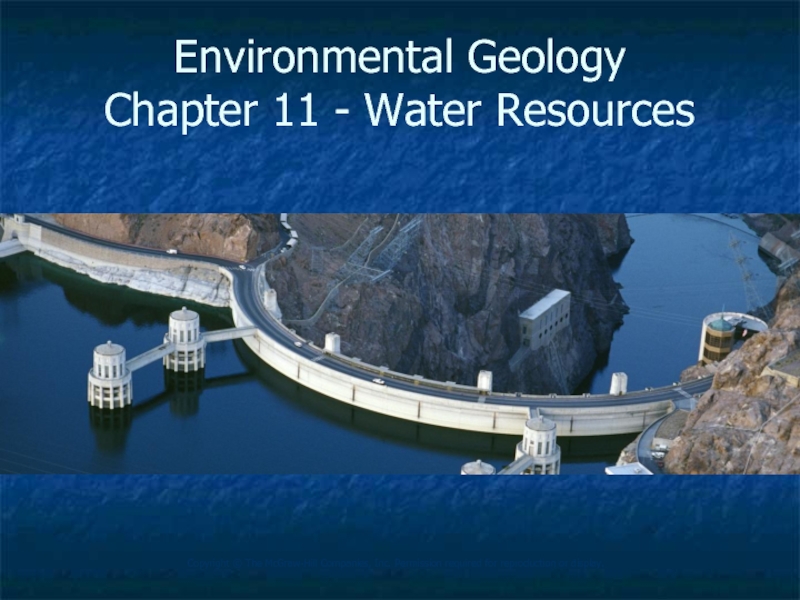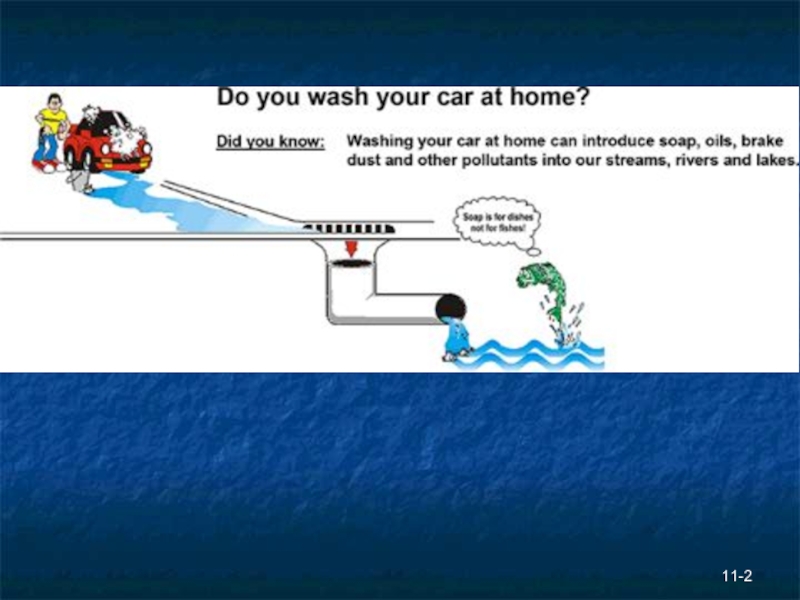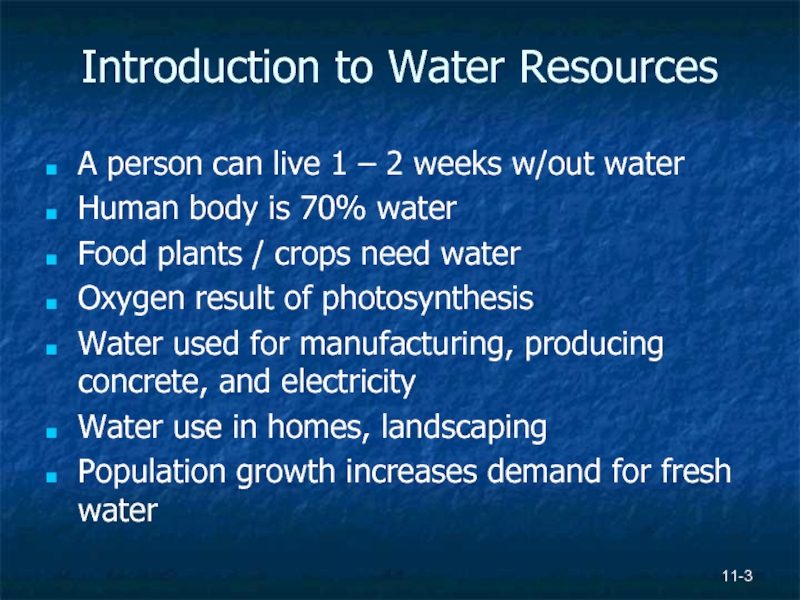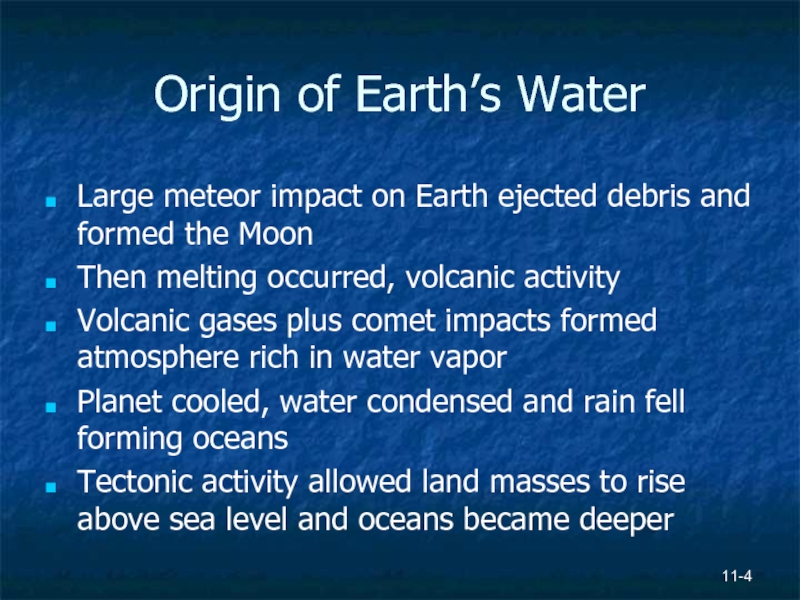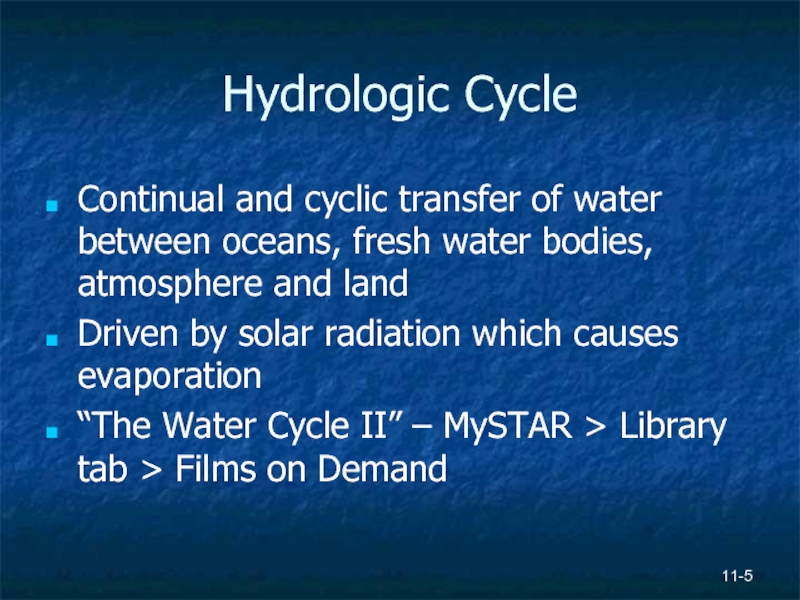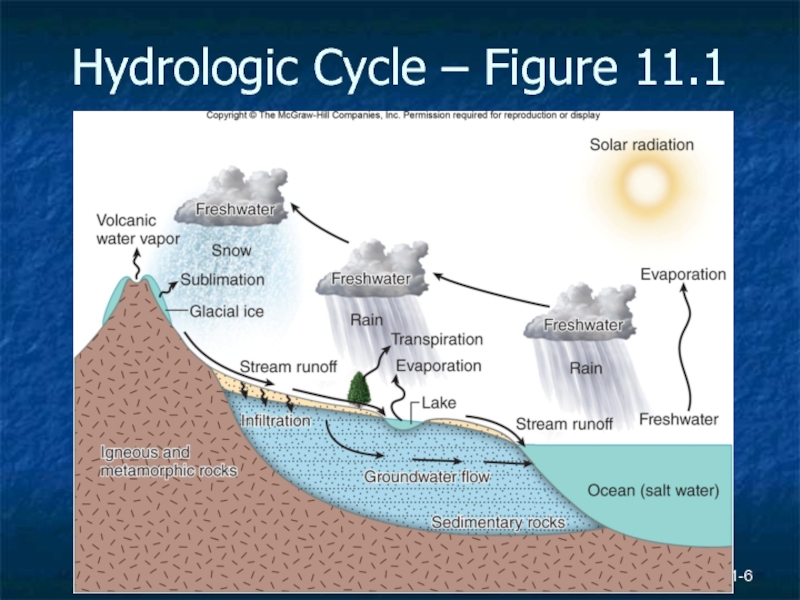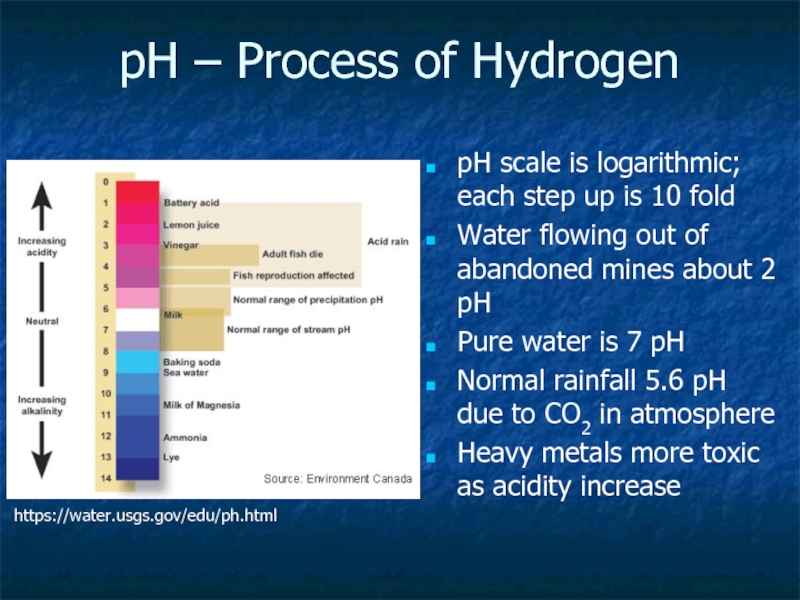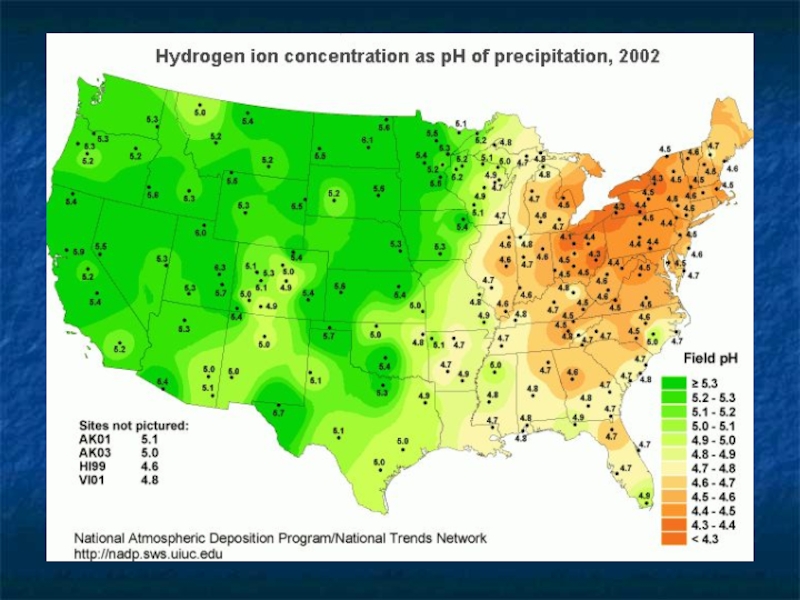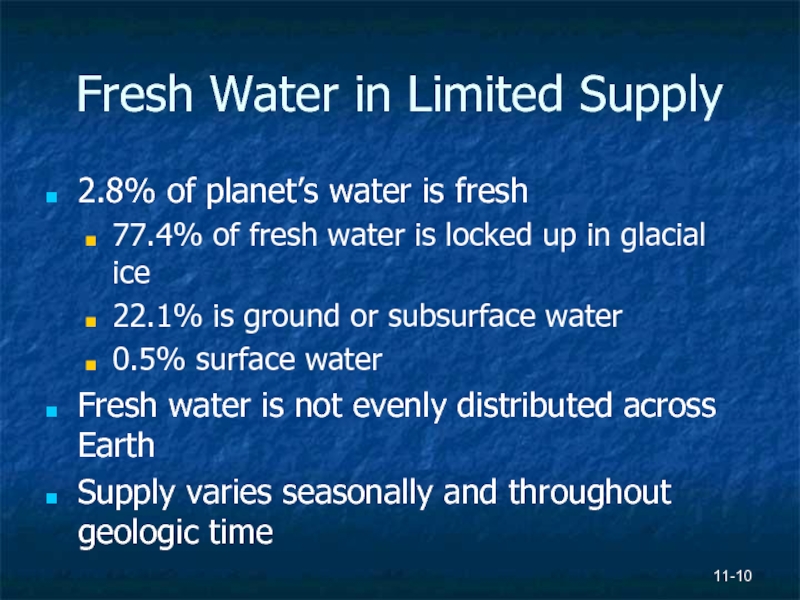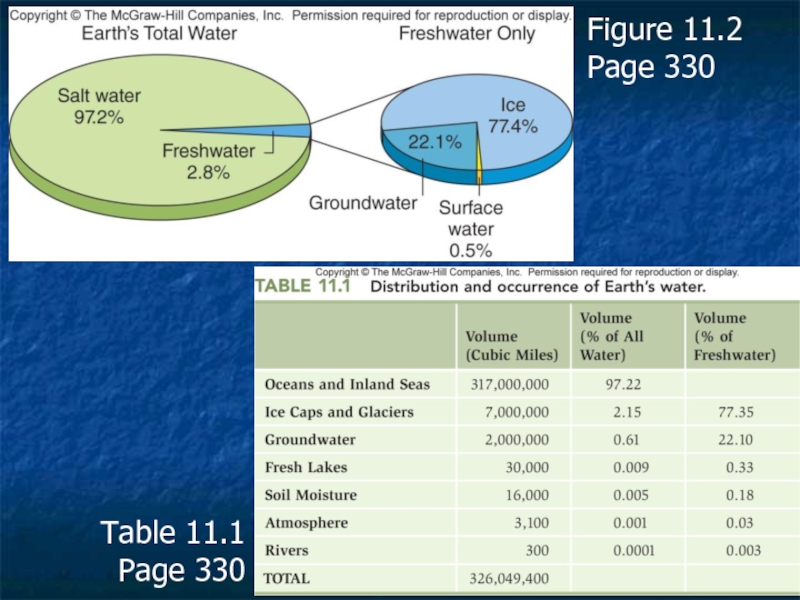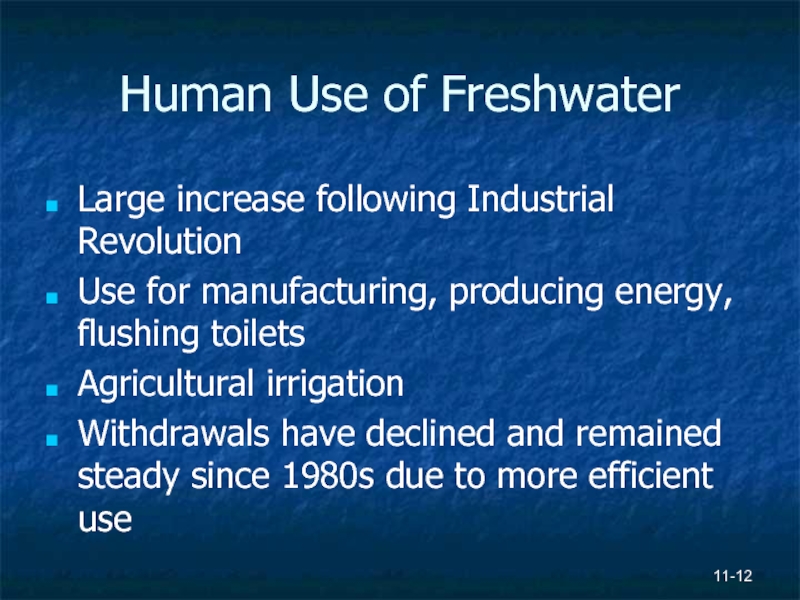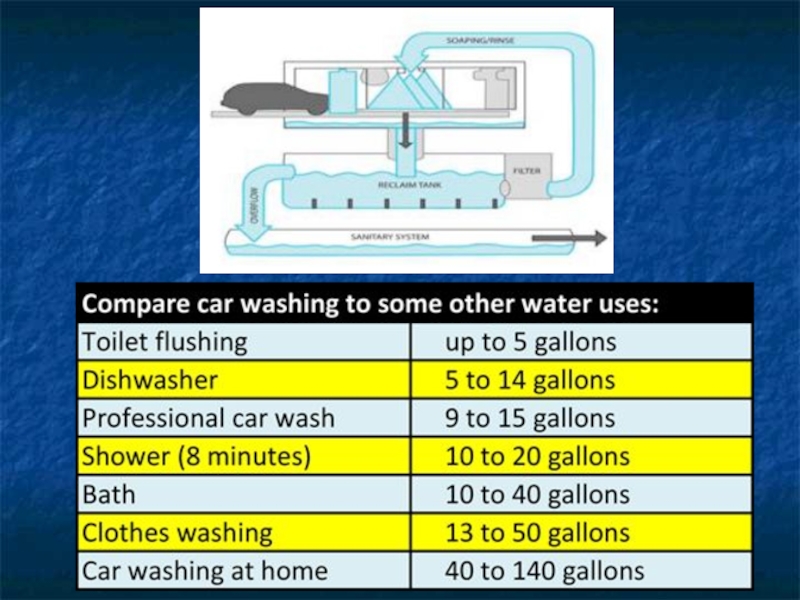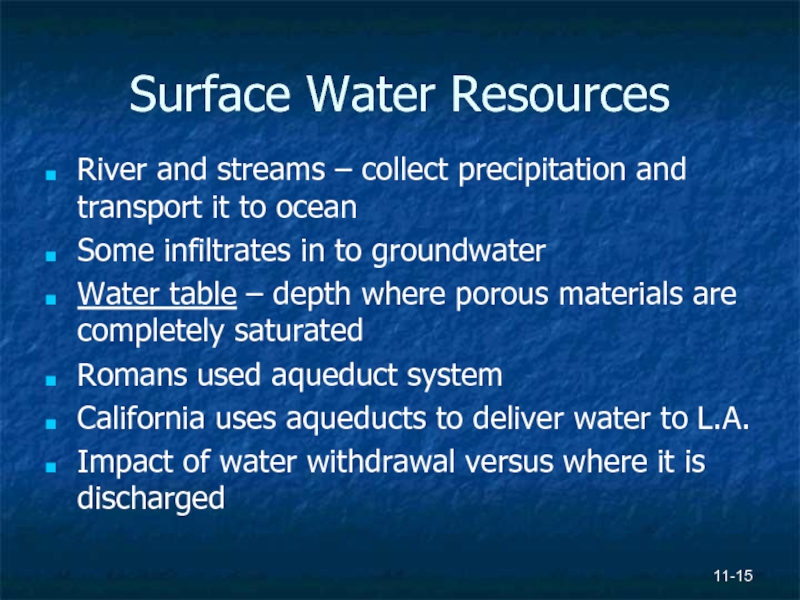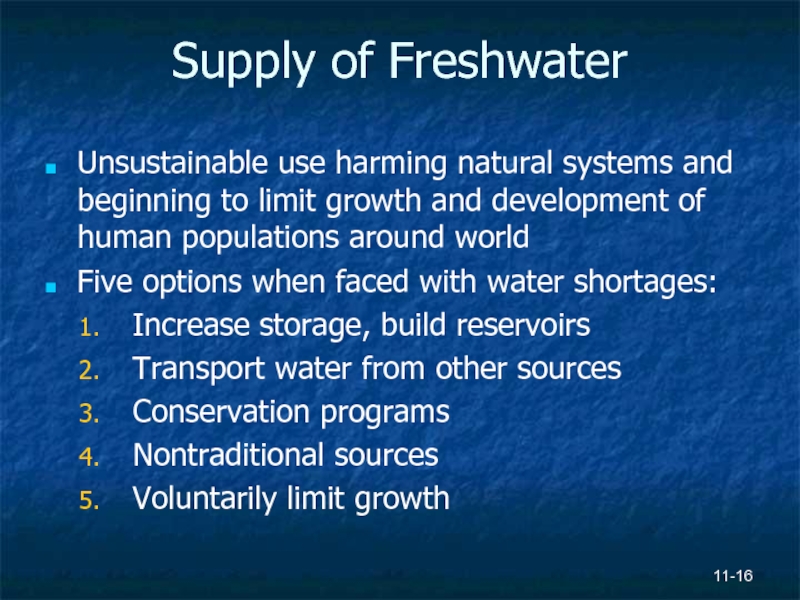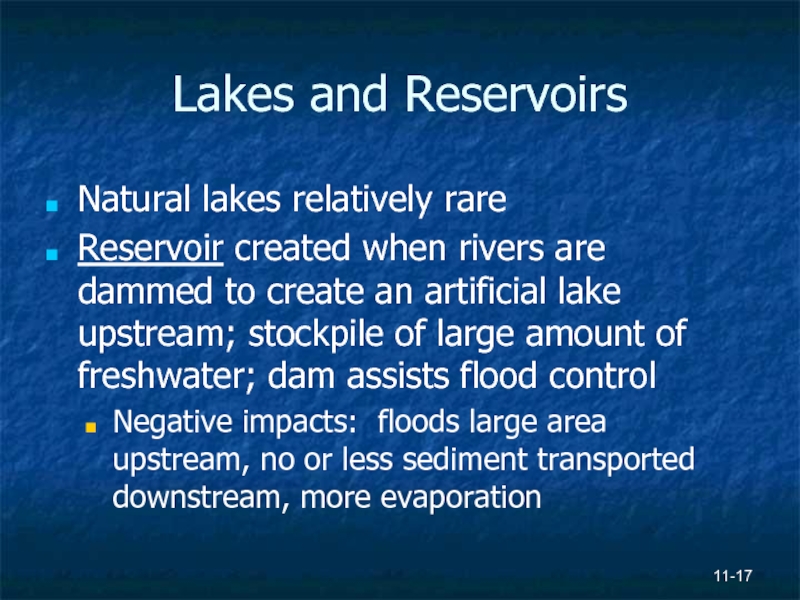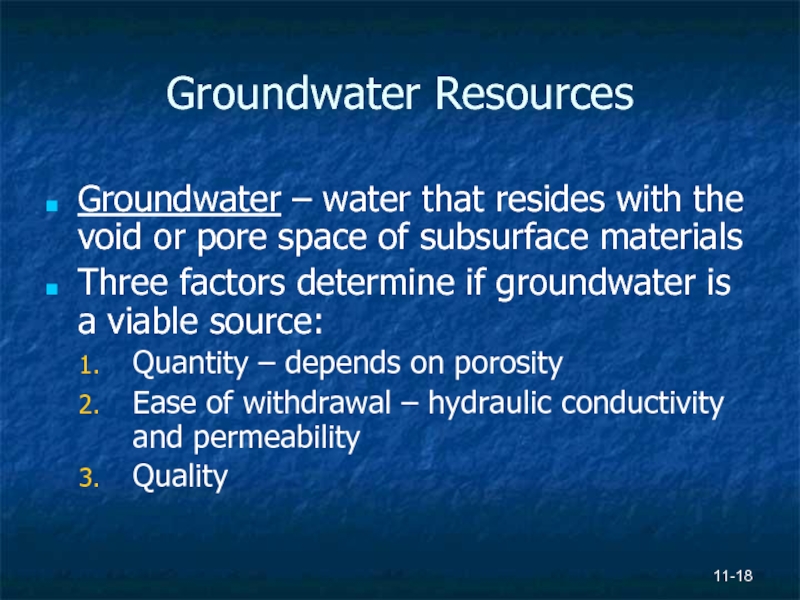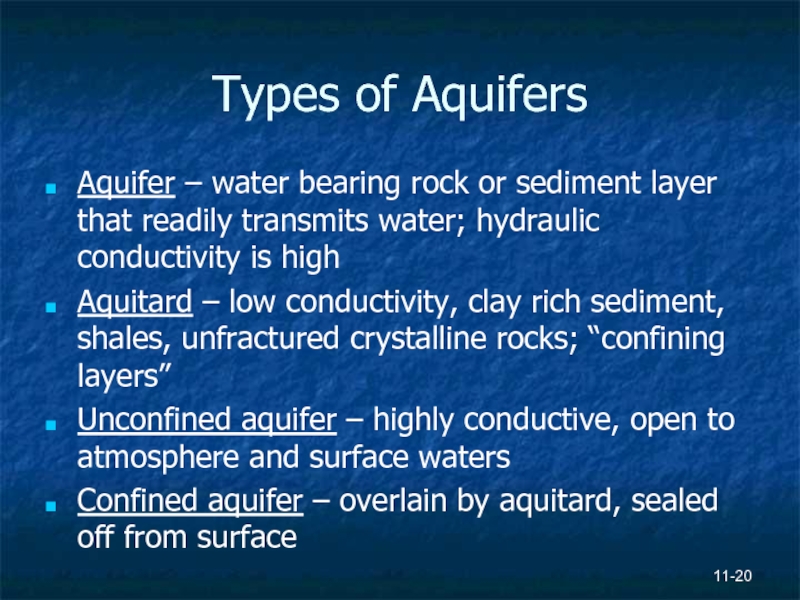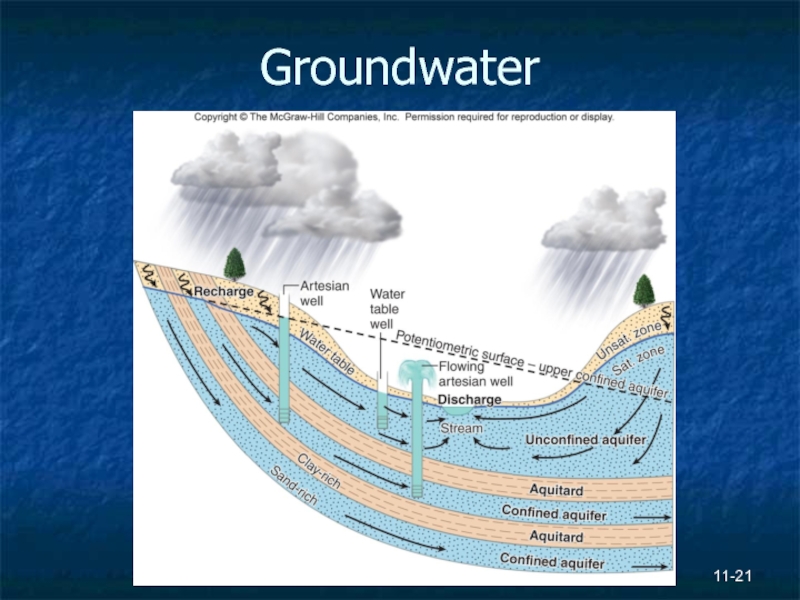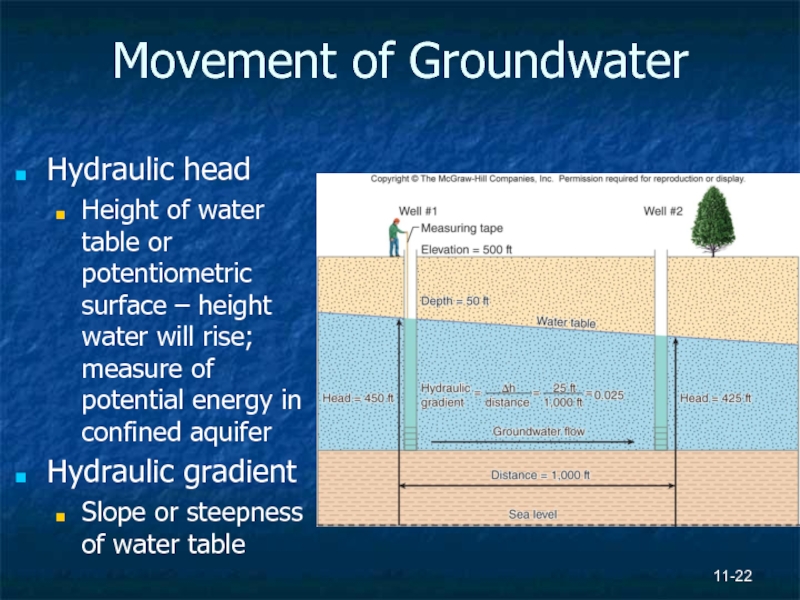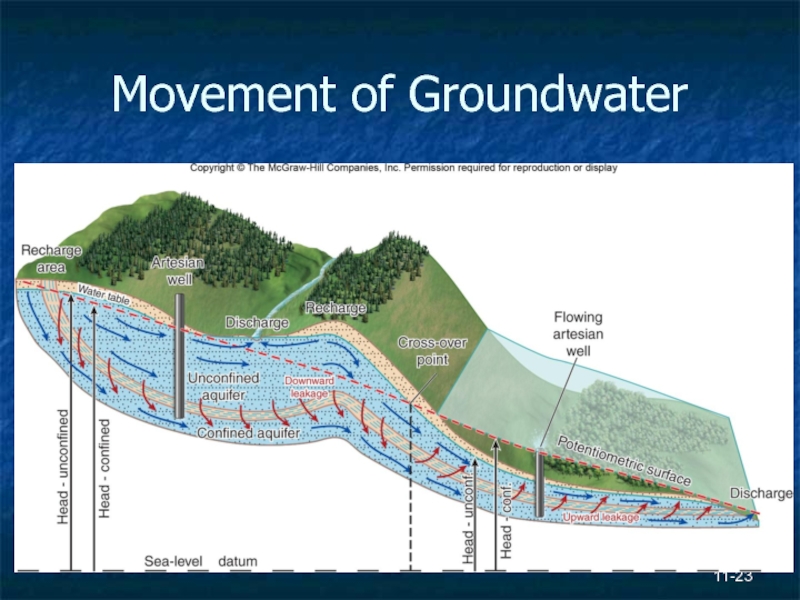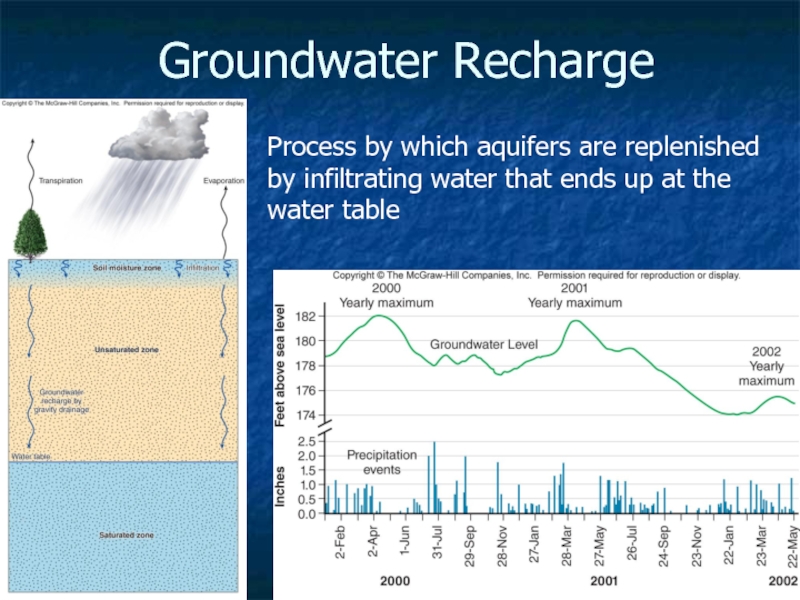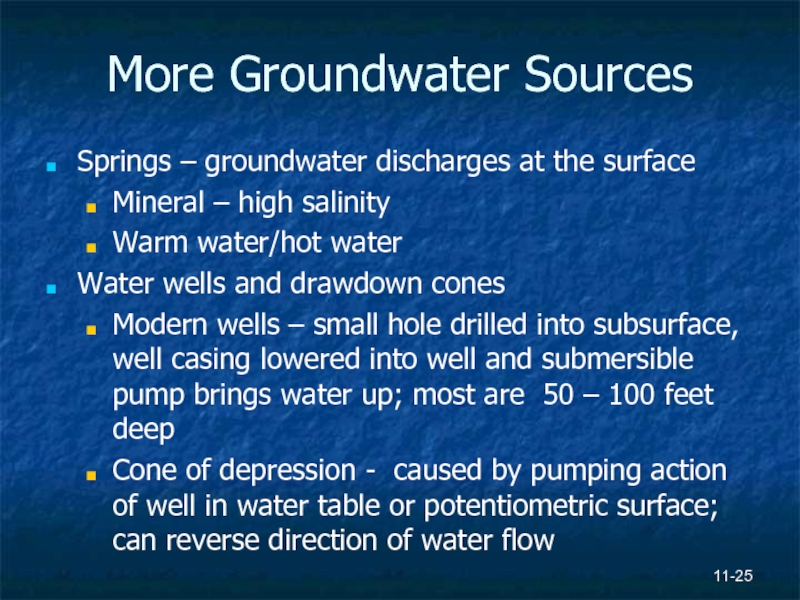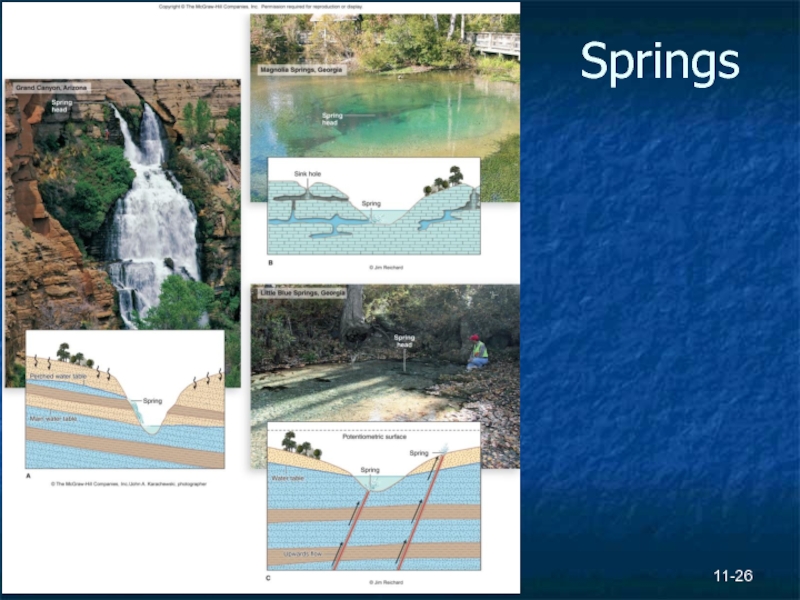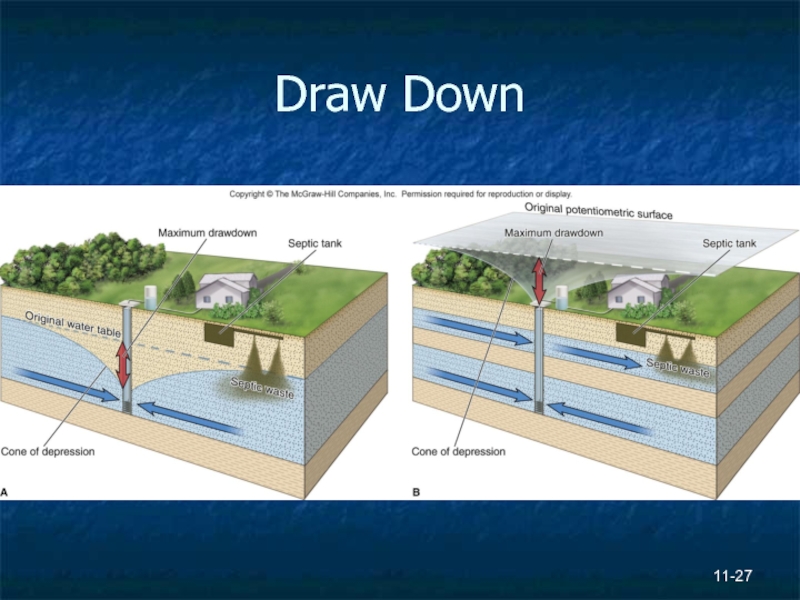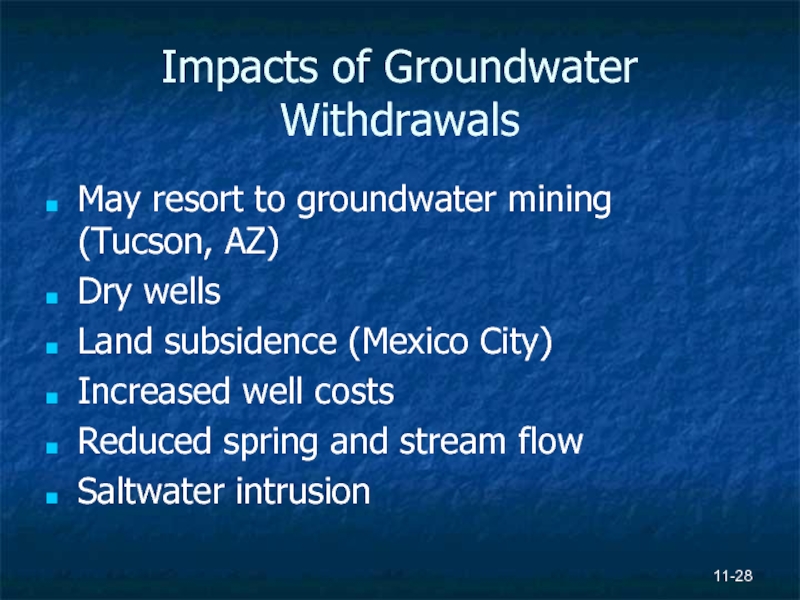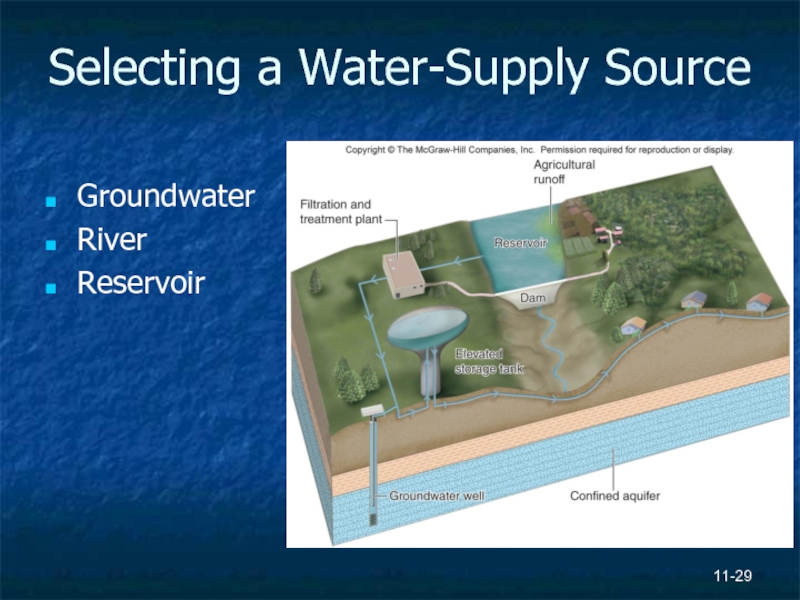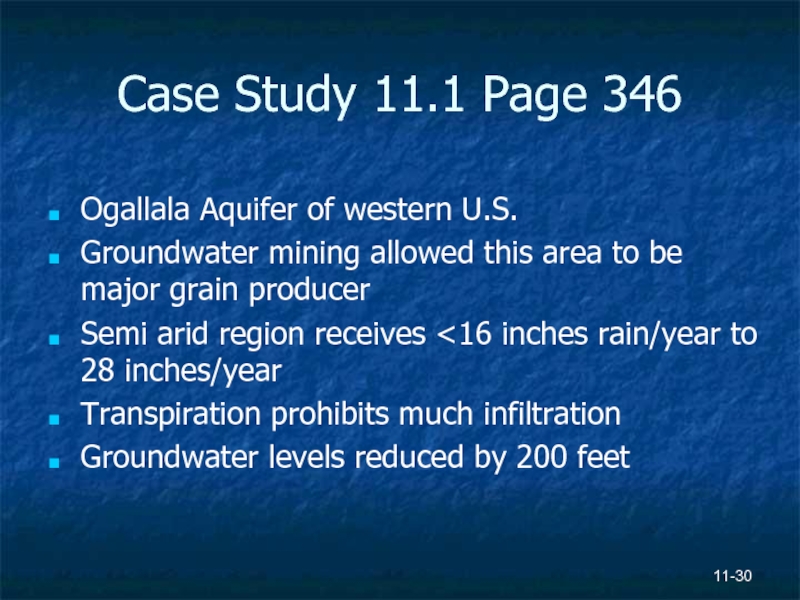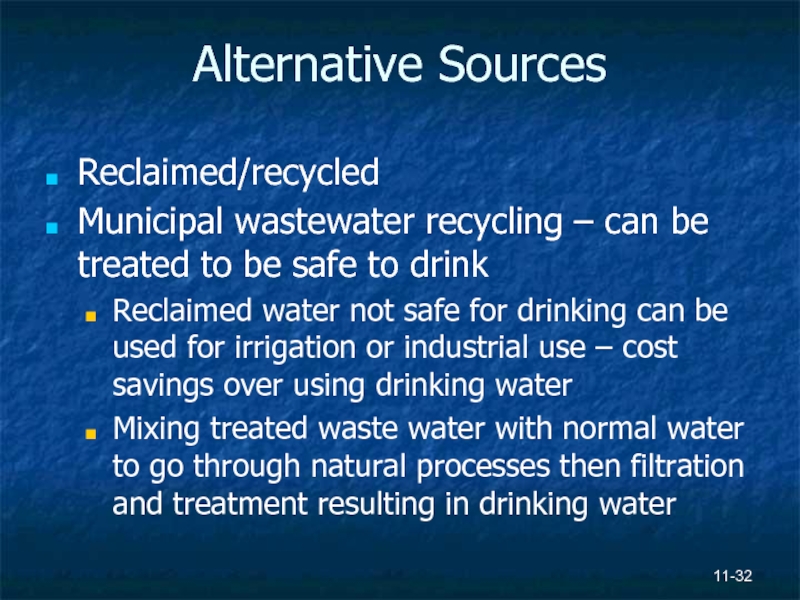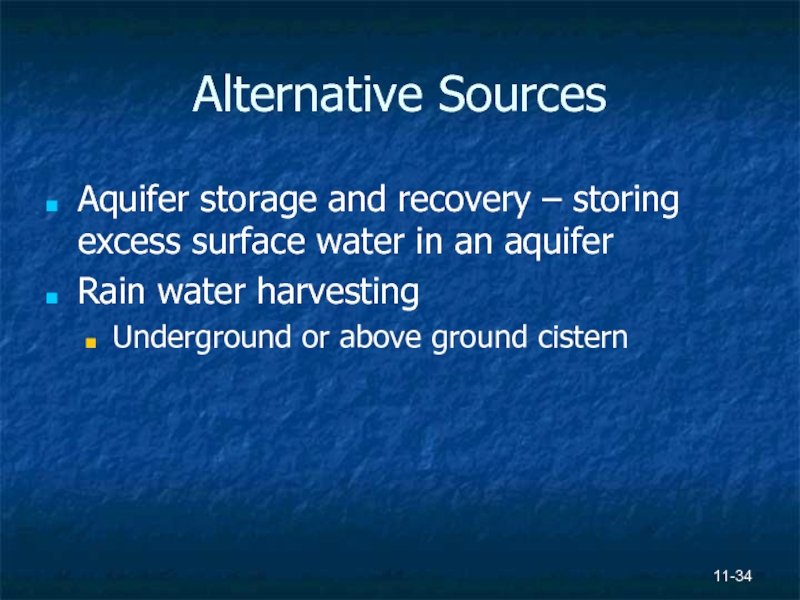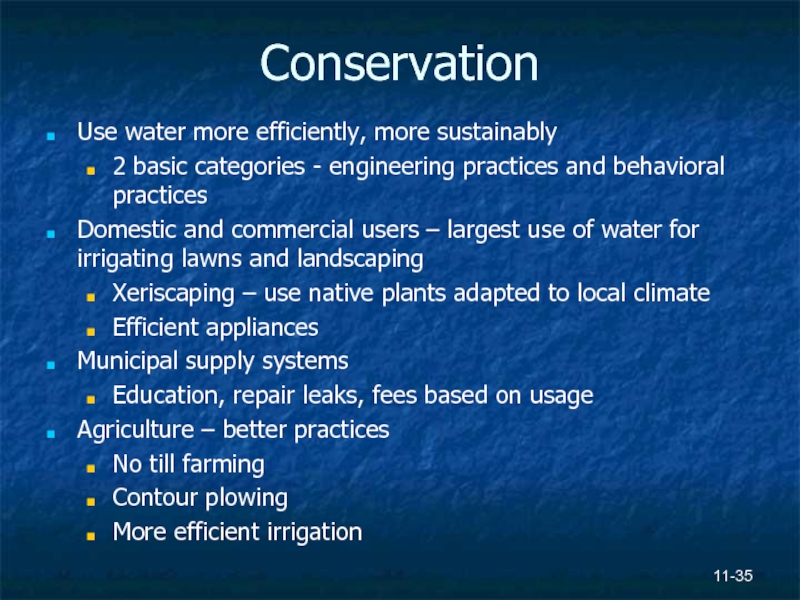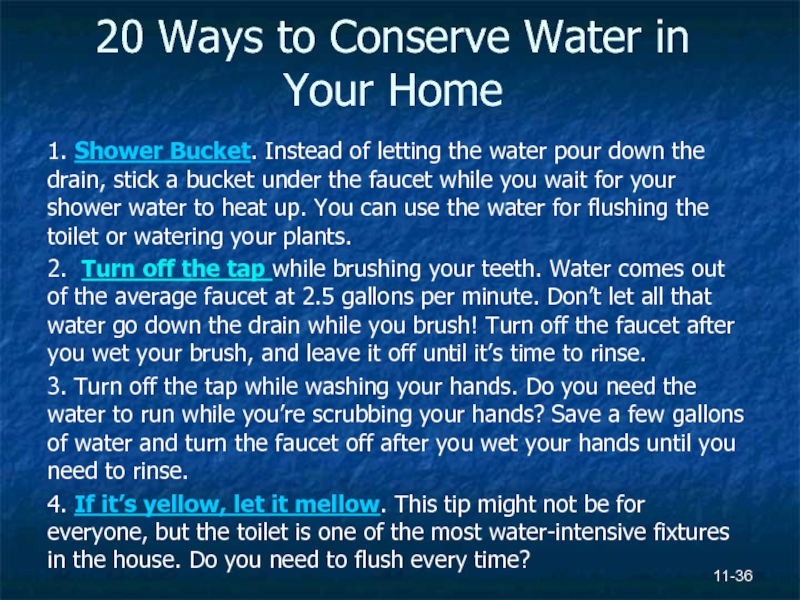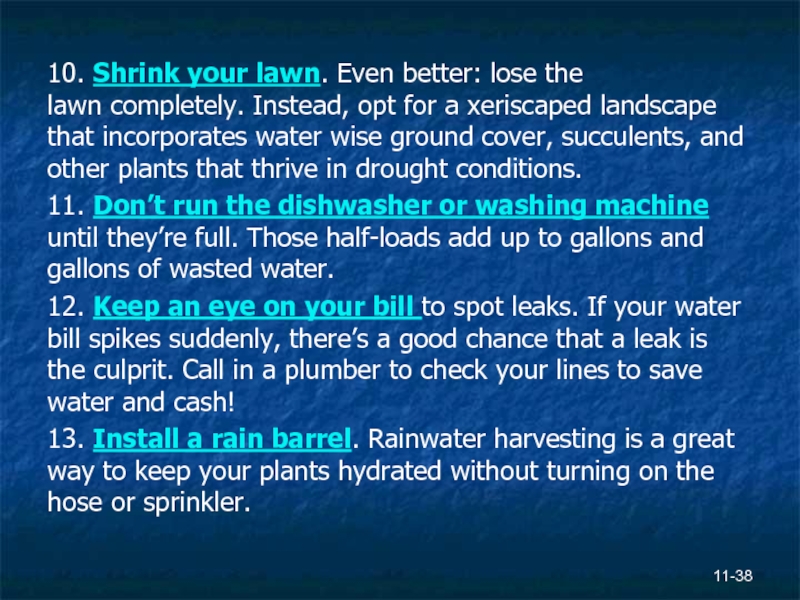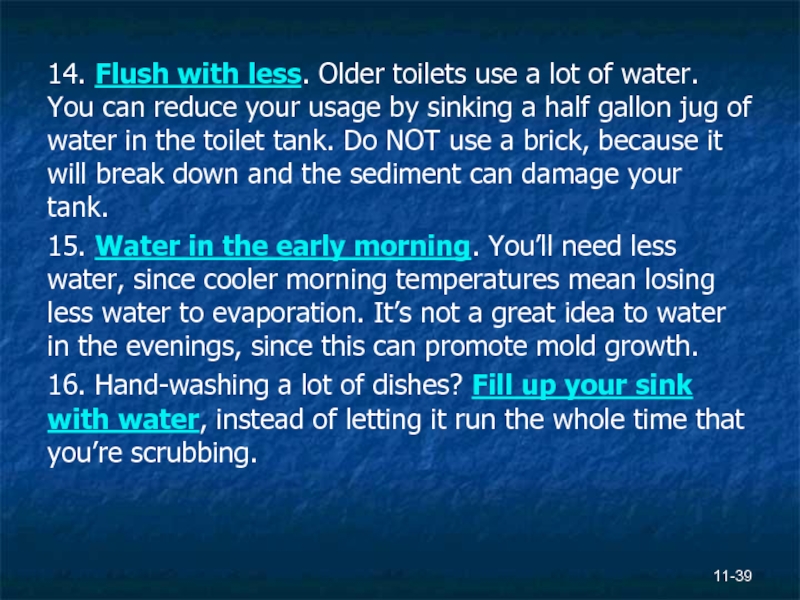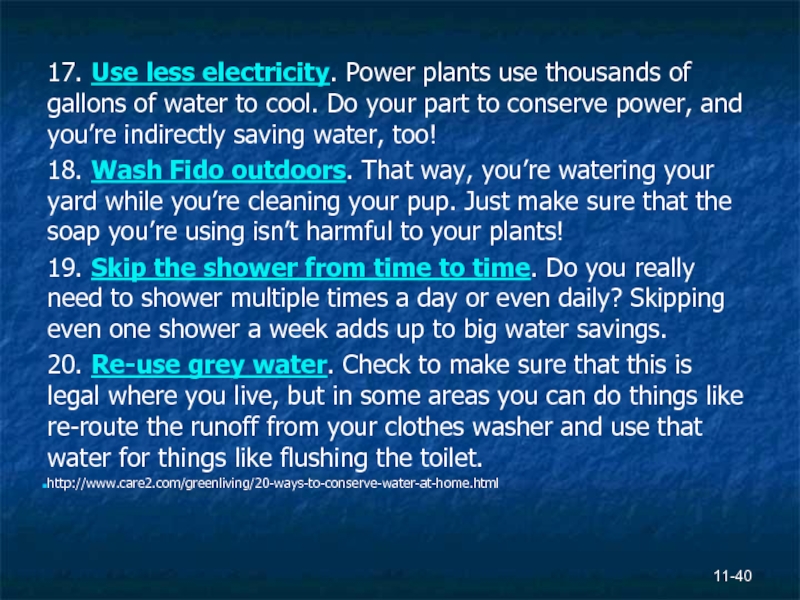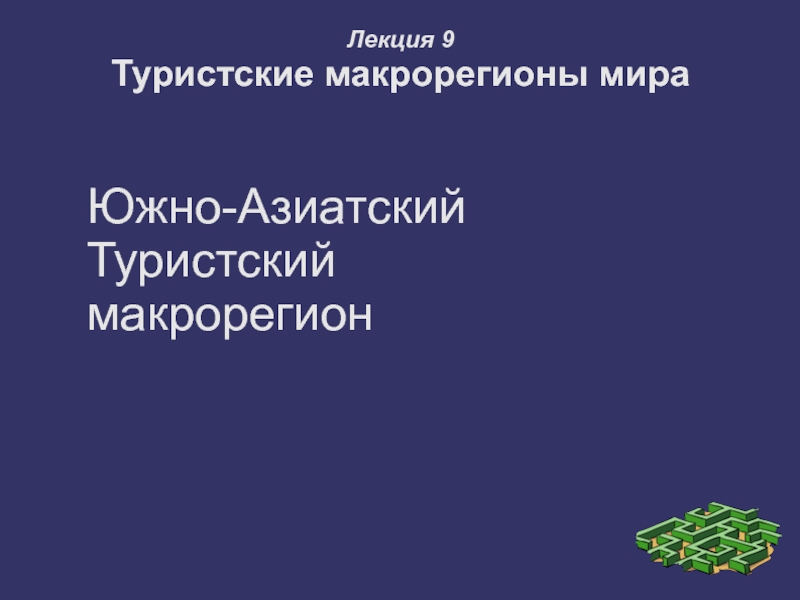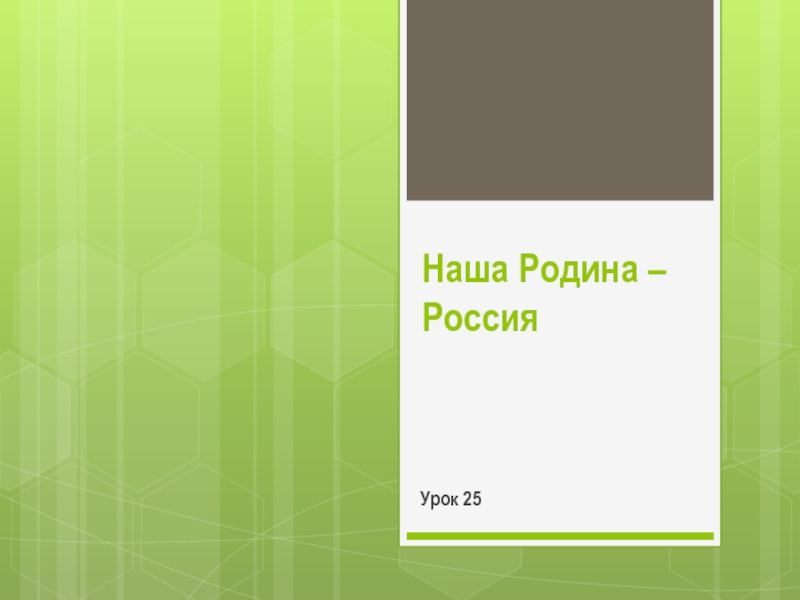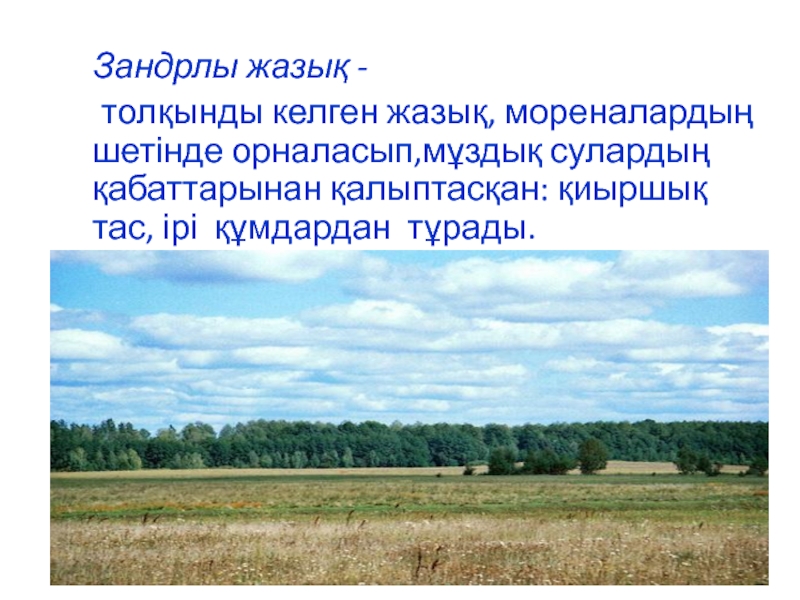- Главная
- Разное
- Дизайн
- Бизнес и предпринимательство
- Аналитика
- Образование
- Развлечения
- Красота и здоровье
- Финансы
- Государство
- Путешествия
- Спорт
- Недвижимость
- Армия
- Графика
- Культурология
- Еда и кулинария
- Лингвистика
- Английский язык
- Астрономия
- Алгебра
- Биология
- География
- Детские презентации
- Информатика
- История
- Литература
- Маркетинг
- Математика
- Медицина
- Менеджмент
- Музыка
- МХК
- Немецкий язык
- ОБЖ
- Обществознание
- Окружающий мир
- Педагогика
- Русский язык
- Технология
- Физика
- Философия
- Химия
- Шаблоны, картинки для презентаций
- Экология
- Экономика
- Юриспруденция
Water Resources презентация
Содержание
- 1. Water Resources
- 2. 11-
- 3. Introduction to Water Resources A person can
- 4. Origin of Earth’s Water Large meteor impact
- 5. Hydrologic Cycle Continual and cyclic transfer of
- 6. 11- Hydrologic Cycle – Figure 11.1
- 7. pH – Process of Hydrogen pH scale
- 9. Salinity Amount of electrically charged ions (salts)
- 10. Fresh Water in Limited Supply 2.8% of
- 11. 11- Figure 11.2 Page 330 Table 11.1 Page 330
- 12. Human Use of Freshwater Large increase following
- 14. 11- Use of Fresh Water Consumptive –
- 15. Surface Water Resources River and streams –
- 16. Supply of Freshwater Unsustainable use harming natural
- 17. Lakes and Reservoirs Natural lakes relatively rare
- 18. 11- Groundwater Resources Groundwater – water that
- 19. 11- Groundwater
- 20. Types of Aquifers Aquifer – water bearing
- 21. 11- Groundwater
- 22. 11- Movement of Groundwater Hydraulic head Height
- 23. 11- Movement of Groundwater
- 24. Groundwater Recharge 11- Process by which aquifers
- 25. 11- More Groundwater Sources Springs – groundwater
- 26. Springs 11-
- 27. Draw Down 11-
- 28. 11- Impacts of Groundwater Withdrawals May resort
- 29. 11- Selecting a Water-Supply Source Groundwater River Reservoir
- 30. Case Study 11.1 Page 346 Ogallala Aquifer
- 31. 11- Alternative Sources Desalinization – removing salts
- 32. Alternative Sources Reclaimed/recycled Municipal wastewater recycling –
- 33. Alternative Sources Industrial and domestic recycling Non
- 34. 11- Alternative Sources Aquifer storage and recovery
- 35. Conservation Use water more efficiently, more sustainably
- 36. 20 Ways to Conserve Water in Your
- 37. 5. Fix your leaks. Whether you go DIY
- 38. 10. Shrink your lawn. Even better: lose the lawn completely.
- 39. 14. Flush with less. Older toilets use a
- 40. 17. Use less electricity. Power plants use thousands
Слайд 1
Environmental Geology
Chapter 11 - Water Resources
Copyright © The McGraw-Hill Companies, Inc.
Слайд 3Introduction to Water Resources
A person can live 1 – 2 weeks
Human body is 70% water
Food plants / crops need water
Oxygen result of photosynthesis
Water used for manufacturing, producing concrete, and electricity
Water use in homes, landscaping
Population growth increases demand for fresh water
11-
Слайд 4Origin of Earth’s Water
Large meteor impact on Earth ejected debris and
Then melting occurred, volcanic activity
Volcanic gases plus comet impacts formed atmosphere rich in water vapor
Planet cooled, water condensed and rain fell forming oceans
Tectonic activity allowed land masses to rise above sea level and oceans became deeper
11-
Слайд 5Hydrologic Cycle
Continual and cyclic transfer of water between oceans, fresh water
Driven by solar radiation which causes evaporation
“The Water Cycle II” – MySTAR > Library tab > Films on Demand
11-
Слайд 7pH – Process of Hydrogen
pH scale is logarithmic; each step up
Water flowing out of abandoned mines about 2 pH
Pure water is 7 pH
Normal rainfall 5.6 pH due to CO2 in atmosphere
Heavy metals more toxic as acidity increase
https://water.usgs.gov/edu/ph.html
Слайд 9Salinity
Amount of electrically charged ions (salts) dissolved in water
Fresh water:
Few dissolved
Produced by evaporation (salts left behind)
Salt water (marine) – highly saline; 35,000 mg/L
Brackish – varying levels of salinity, where fresh water meets marine
11-
Слайд 10Fresh Water in Limited Supply
2.8% of planet’s water is fresh
77.4% of
22.1% is ground or subsurface water
0.5% surface water
Fresh water is not evenly distributed across Earth
Supply varies seasonally and throughout geologic time
11-
Слайд 12Human Use of Freshwater
Large increase following Industrial Revolution
Use for manufacturing, producing
Agricultural irrigation
Withdrawals have declined and remained steady since 1980s due to more efficient use
11-
Слайд 1411-
Use of Fresh Water
Consumptive – water is lost or consumed
City or
Electricity generation
Personal
Irrigation – water lost due to evaporation and transpiration
Non-consumptive
Washing dishes – almost all water returned to a water supply source
Off stream use – water withdrawn from one source and returned to a different source
Consumptive and off stream can disrupt natural systems
Слайд 15Surface Water Resources
River and streams – collect precipitation and transport it
Some infiltrates in to groundwater
Water table – depth where porous materials are completely saturated
Romans used aqueduct system
California uses aqueducts to deliver water to L.A.
Impact of water withdrawal versus where it is discharged
11-
Слайд 16Supply of Freshwater
Unsustainable use harming natural systems and beginning to limit
Five options when faced with water shortages:
Increase storage, build reservoirs
Transport water from other sources
Conservation programs
Nontraditional sources
Voluntarily limit growth
11-
Слайд 17Lakes and Reservoirs
Natural lakes relatively rare
Reservoir created when rivers are dammed
Negative impacts: floods large area upstream, no or less sediment transported downstream, more evaporation
11-
Слайд 1811-
Groundwater Resources
Groundwater – water that resides with the void or pore
Three factors determine if groundwater is a viable source:
Quantity – depends on porosity
Ease of withdrawal – hydraulic conductivity and permeability
Quality
Слайд 20Types of Aquifers
Aquifer – water bearing rock or sediment layer that
Aquitard – low conductivity, clay rich sediment, shales, unfractured crystalline rocks; “confining layers”
Unconfined aquifer – highly conductive, open to atmosphere and surface waters
Confined aquifer – overlain by aquitard, sealed off from surface
11-
Слайд 2211-
Movement of Groundwater
Hydraulic head
Height of water table or potentiometric surface –
Hydraulic gradient
Slope or steepness of water table
Слайд 24Groundwater Recharge
11-
Process by which aquifers are replenished by infiltrating water that
Слайд 2511-
More Groundwater Sources
Springs – groundwater discharges at the surface
Mineral –
Warm water/hot water
Water wells and drawdown cones
Modern wells – small hole drilled into subsurface, well casing lowered into well and submersible pump brings water up; most are 50 – 100 feet deep
Cone of depression - caused by pumping action of well in water table or potentiometric surface; can reverse direction of water flow
Слайд 2811-
Impacts of Groundwater Withdrawals
May resort to groundwater mining (Tucson, AZ)
Dry wells
Land
Increased well costs
Reduced spring and stream flow
Saltwater intrusion
Слайд 30Case Study 11.1 Page 346
Ogallala Aquifer of western U.S.
Groundwater mining allowed
Semi arid region receives <16 inches rain/year to 28 inches/year
Transpiration prohibits much infiltration
Groundwater levels reduced by 200 feet
11-
Слайд 3111-
Alternative Sources
Desalinization – removing salts or dissolved ions from sea water
Sea
Distillation – salt water boiled and water vapor captured
Reverse osmosis – semi-permeable membrane traps salts and allows H20 molecules to pass
Problem with disposing of super saline waste water
Expensive, only used in areas with acute water supply problems
Слайд 32Alternative Sources
Reclaimed/recycled
Municipal wastewater recycling – can be treated to be safe
Reclaimed water not safe for drinking can be used for irrigation or industrial use – cost savings over using drinking water
Mixing treated waste water with normal water to go through natural processes then filtration and treatment resulting in drinking water
11-
Слайд 33Alternative Sources
Industrial and domestic recycling
Non contact cooling water – reusing water
“Graywater” – home waste water that has not been used in a toilet can be collected and reused
11-
Слайд 3411-
Alternative Sources
Aquifer storage and recovery – storing excess surface water in
Rain water harvesting
Underground or above ground cistern
Слайд 35Conservation
Use water more efficiently, more sustainably
2 basic categories - engineering practices
Domestic and commercial users – largest use of water for irrigating lawns and landscaping
Xeriscaping – use native plants adapted to local climate
Efficient appliances
Municipal supply systems
Education, repair leaks, fees based on usage
Agriculture – better practices
No till farming
Contour plowing
More efficient irrigation
11-
Слайд 3620 Ways to Conserve Water in Your Home
1. Shower Bucket. Instead of letting
2. Turn off the tap while brushing your teeth. Water comes out of the average faucet at 2.5 gallons per minute. Don’t let all that water go down the drain while you brush! Turn off the faucet after you wet your brush, and leave it off until it’s time to rinse.
3. Turn off the tap while washing your hands. Do you need the water to run while you’re scrubbing your hands? Save a few gallons of water and turn the faucet off after you wet your hands until you need to rinse.
4. If it’s yellow, let it mellow. This tip might not be for everyone, but the toilet is one of the most water-intensive fixtures in the house. Do you need to flush every time?
11-
Слайд 375. Fix your leaks. Whether you go DIY or hire a plumber,
Re-use your pasta cooking liquid. Instead of dumping that water down the drain, try draining your pasta water into a large pot. Once it cools, you can use it to water your plants. Just make sure you wait, because if you dump that boiling water on your plants, you might harm them.
7. Head to the car wash. If you feel compelled to wash your car, take it to a car wash that recycles the water, rather than washing at home with the hose.
8. Cut your showers short. Older shower heads can use as much as 5 gallons of water per minute. Speed things up in the shower for some serious water savings.
9. Choose efficient fixtures. Aerating your faucets, investing in a low-flow toilet, choosing efficient shower heads, and opting for a Water Sense rated dishwasher and washing machine can add up to big water savings.
11-
Слайд 3810. Shrink your lawn. Even better: lose the lawn completely. Instead, opt for a
11. Don’t run the dishwasher or washing machine until they’re full. Those half-loads add up to gallons and gallons of wasted water.
12. Keep an eye on your bill to spot leaks. If your water bill spikes suddenly, there’s a good chance that a leak is the culprit. Call in a plumber to check your lines to save water and cash!
13. Install a rain barrel. Rainwater harvesting is a great way to keep your plants hydrated without turning on the hose or sprinkler.
11-
Слайд 3914. Flush with less. Older toilets use a lot of water. You
15. Water in the early morning. You’ll need less water, since cooler morning temperatures mean losing less water to evaporation. It’s not a great idea to water in the evenings, since this can promote mold growth.
16. Hand-washing a lot of dishes? Fill up your sink with water, instead of letting it run the whole time that you’re scrubbing.
11-
Слайд 4017. Use less electricity. Power plants use thousands of gallons of water
18. Wash Fido outdoors. That way, you’re watering your yard while you’re cleaning your pup. Just make sure that the soap you’re using isn’t harmful to your plants!
19. Skip the shower from time to time. Do you really need to shower multiple times a day or even daily? Skipping even one shower a week adds up to big water savings.
20. Re-use grey water. Check to make sure that this is legal where you live, but in some areas you can do things like re-route the runoff from your clothes washer and use that water for things like flushing the toilet.
http://www.care2.com/greenliving/20-ways-to-conserve-water-at-home.html
11-
